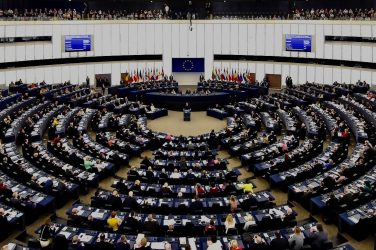Our author, Sam Hassan discusses comparisons between the Covid-19 pandemic and the Spanish Influenza
In the midst of Covid-19, there is renewed interest in the world’s last truly global pandemic, Spanish Influenza. Between 1918-19, 1/3 of the global population were infected by the disease, leading to an estimated death toll of anywhere between 17-100 million people worldwide. Both Covid-19 and the Influenza virus were highly contagious respiratory diseases, causing death primarily due to severe complications when spreading to the lungs. The most vulnerable have been those with underlying health conditions, yet whilst Covid-19 is most dangerous to seniors, the majority of Spanish Flu deaths were young adults, as a major effect of the virus was to instigate a Cykotine Storm; an overreaction of the immune system. Covid-19 has now afflicted over 200 countries, so a comparison with Spanish Flu has become increasingly relevant.
As we have found with Covid-19, it is nigh on impossible to pinpoint the precise moment of origin for a novel disease. Spanish Flu likely emerged within overcrowded WW1 camps, through which 100,000s of diseased and injured soldiers passed through, kept alongside large pens of livestock. Covid-19 arose in a Wuhan ‘wet’ market, similar in that wild animals were kept in close quarters with humans, often slaughtered on site. Such conditions, with high levels of contact between humans and animals allowing easy transmission of bodily fluids, are ideal for the emergence and spread of a novel virus. The large scale troop movements of WW1 catalysed the spread of Spanish Flu, as mass migration and global transport greatly enhance the scope of pandemics. Indeed, following a milder strain in the spring of 1918, a second, highly contagious and deadly wave, spread worldwide during the winter following the war. In our incredibly well connected world, the spread of Covid-19 is no surprise, though factors such as a lack of coordinated testing and the sometimes asymptomatic nature of the disease have compounded it.
In both pandemics, early media and political responses greatly underplayed the threat, naively affirming ‘business as usual.
In both pandemics, early media and political responses greatly underplayed the threat, naively affirming ‘business as usual.’ In the case of Spanish Flu, routine wartime media censorship meant there were very few early reports, with those few claiming there was no need for any anxiety. The name ‘Spanish Flu’ actually stems from the fact that neutral Spain allowed uncensored reports, hence people assumed the disease was ‘Spanish.’ Today, many leaders, from Donald Trump and Boris Johnson to Jair Bosolnaro have also sought to underplay the danger, mainly due to an unwillingness to accept a trade off between public health and the economy. Naturally, regions which delayed their response suffered greater losses, while those those who acted early, such as Mette Frederiksen of Denmark, or Jacinda Arden of New Zealand, were able to prevent very high numbers of deaths. In any case, most politicians eventually acquiesced to the dangers, as by the second wave of Spanish Flu public officials issued regular warning notices through newspapers, though the media largely avoided reporting the disease save for medicinal advertisers. By contrast, today we are hard pressed to find any news source which does not obsessively focus on the fallout from Covid-19.
Even during Spanish Flu, measures were implemented to limit the spread, such as closing public institutions like schools or theaters and preventing mass gatherings. There was an understanding of the importance of personal hygiene, so people were instructed to wash hands regularly, limit physical contact and wear face masks. Nevertheless, there was no concept of social distancing and crucially, a very embryonic understanding of virology. Doctors legitimately recommended beef tea as a cure, with such limited awareness partly explaining the colossal death toll. Modern techniques such as testing and contract tracing were absent, as was the global, coordinated scientific research into a vaccine we see today. Moreover, during Covid-19, the restrictions on normal life have been much more comprehensive, with all non-essential business at a standstill. During Spanish Flu, with very limited opportunities to work from home, business was largely left to function as normal.
With both these pandemics, the effects have shown no regard for borders, social class, economic status or age group. They have put an extreme strain on medical systems, leaving hospitals, pharmacies and graveyards overwhelmed. With Spanish Flu, the severity was such that entire communities were wiped out, and mass graves were frequently dug. As today, poor people were hit disproportionately hard, their risk exacerbated by numerous environmental factors. For one, working class people are most represented in overcrowded, polluted urban areas, working jobs with a higher occupational risk for disease. They are also more likely to live in large families and go to work even when sick, due to costly medical care or sick leave. A lack of access to good healthcare, malnourishment and higher stress levels all amplify the risk of disease, conditions which are far more prevalent within poorer communities. Inequalities are amplified in pandemics, as we see today in the evidence that black, Asian and minority communities have been inordinately affected by Covid-19.
The economic effects of a pandemic can be very severe. Today, with all non-essential business halted and countries on complete lockdown, a huge, global recession is on the horizon. Many industries, such as transport, seem irrecoverable at the moment. Spanish Flu was no different, as businesses from mail delivery to transport and farming stalled simply due to the human cost of the illness, the fact that so many adults of working age were debilitated. As today, the entertainment and recreation industry was particularly hard hit, yet the healthcare industry experienced a noticeable boom. Due to record inconsistencies, there is a lack of conclusive data for the period, but it does seem that labour shortages resulted in wage increases for the average worker. Moreover, massive government demand during the war meant that the economy bounced back fairly quickly. This is impossible today, as we are actually in need of an anti-wartime economy; one which allows a huge scaling back of production. Current predictions are that GDP may fall 20-30% in 2020 with a 15% global unemployment rate, so governments are taking rightful action by proposing rescue packages potentially reaching up to £10 trillion.
It is clear that pandemics have huge effects on the normal functioning of society.
It is clear that pandemics have huge effects on the normal functioning of society. In both cases, intrusive restrictions were placed on daily life, changing the fundamental nature of social interaction. During Spanish Flu, an already tense atmosphere was worsened by renewed mistrust and suspicion, almost causing a breakdown in civic society in which people were randomly accused of aiding ‘enemy spreaders.’ With Covid-19, there has also been a tense, suspicious atmosphere, as there looms an onslaught on privacy rights through intrusive technology like ‘track and trace’ or other surveillance measures. Nevertheless, unlike the war weary population of the past, today many embrace a ‘rally round the flag’ phenomenon, uniting as a country in warlike terms against the ‘invisible enemy.’
In the wake of these pandemics, there has been a widespread acknowledgement of the need for institutional change, towards a more collective and socially responsible society. As a direct result of the brutality of Spanish Flu, the 1920s saw many governments finally beginning to embrace socialised healthcare. Russia became the first, and many others followed suit in ensuing decades. Covid-19 is also accelerating the demand for institutional and social change, as we recognise the limits of our current economic system, one which is very vulnerable to external shocks, disproportionally favours big business over public health, and leaves many vulnerable groups at the mercy of unforgiving market forces. It is my hope that we will recognise that the current system, if unchecked, will surely lead to even worse crises in the future.
Cover photo:Adam Nieścioruk on Unsplash










